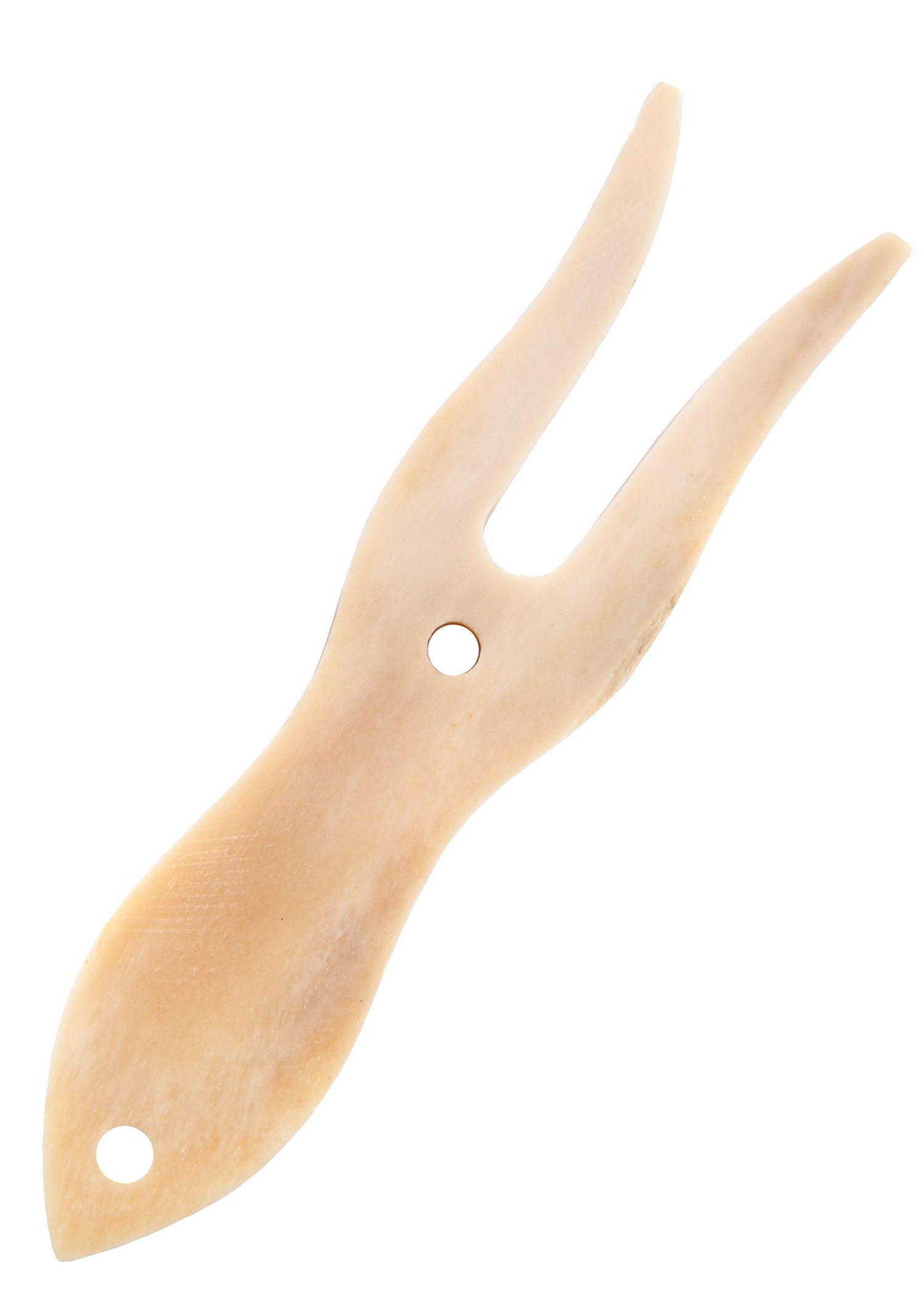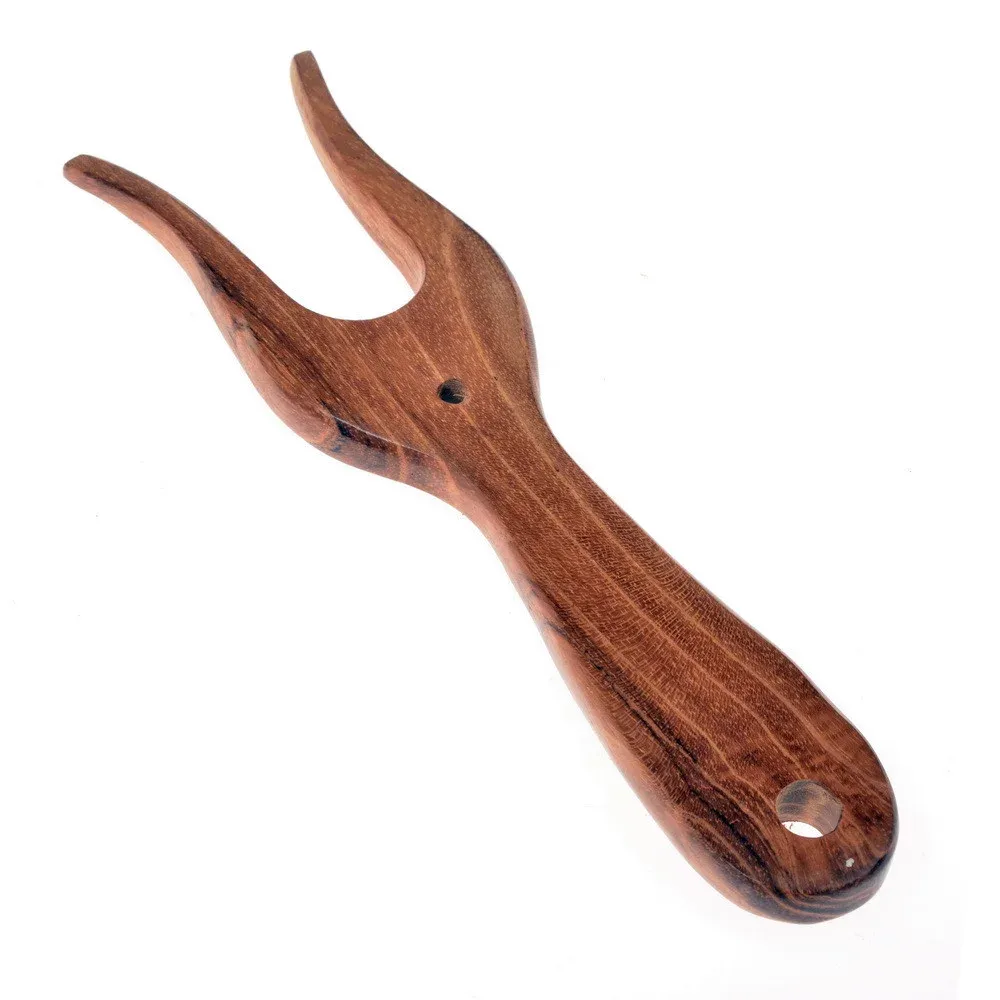What is a Lucet?
The **lucet** or **luceta** is an ancient tool of medieval origin, mainly used for weaving cords and braids. Over the centuries, its use has been linked to various cultures, especially during the Viking and medieval periods. Although the use of the lucet declined around the 12th century, this artisanal braiding technique resurfaced in the 16th century and continued to be employed until the 19th century.

Origins and Historical Use
The **lucet** dates back to ancient times, where it was primarily used to create strong and decorative cords that could be used in clothing as fastening or elastic elements. During the Middle Ages, the Vikings employed these cords for various practical uses, including hanging objects from their belts. Archaeological findings at Viking sites, along with literary references, confirm the widespread use of this tool.
Description and Construction
The design of the **lucet** is simple and functional. Typically, it has a shape reminiscent of a horn and is made from durable materials such as wood, bone, or, in more recent times, ivory and mother-of-pearl. It has two prongs or horns that are fundamental to the weaving process. In the Victorian era, lucets were made from more exotic materials, highlighting attention to detail and aesthetics.

Weaving Technique
The process of making a cord with a **lucet** is quite simple but requires manual skill. It starts by threading the yarn through the central hole of the tool and then wrapping it around the prongs to form a figure-eight. The resulting knots are raised using fingers or a small additional tool, and tension is applied by pulling the yarn behind the luceta. This repetitive pattern allows for the creation of cords of any length, characterized by being square, strong, and moderately elastic.
Uses and Applications
Cords made with a **lucet** were used in a wide variety of contexts. Typically made from materials like wool, linen, silk, and other vegetable fibers, they became functional and aesthetic elements in belts, straps, and textile decorations. Their robust nature and the ability not to unravel after being cut, increased their popularity as a reliable technique in the past.
Archaeological Finds
Despite its simple design, which complicates its identification in archaeological contexts, objects associated with the use of the **lucet** have been found. A notable example is a tubular bone artifact from the 11th century found in Lund, Sweden, which features a runic inscription. These discoveries underscore the historical relevance of the luceta and its widespread use across different cultures.
| Material | Era | Use |
|---|---|---|
| Wood, bone | Viking and medieval era | Cords for clothing and practical uses |
| Ivory, mother-of-pearl | Victorian era | Decorative and practical cords |
The **luceta** remains a fascinating tool that, despite its simplicity, retains a special charm for those interested in traditional weaving techniques, as well as for historical framing and medieval reenactment. Its legacy endures and offers a window into the artisanal techniques of the past.
















